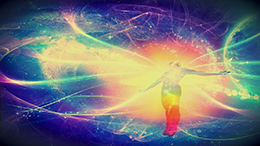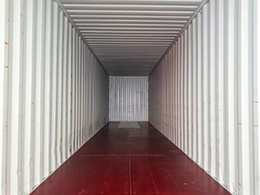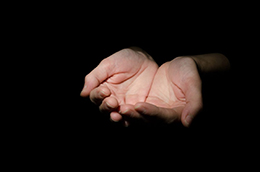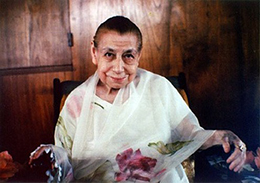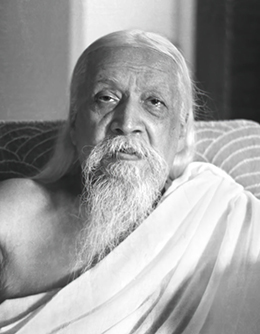Growth
Preparing and Opening the Being to the Higher Force
Abstract
For a long period of time, we try to find temporary resolutions and harmonies in our life, through the tool of a half-lit ordinary mind and reason. And it does serve a purpose to our growth and understanding. But after we have been long enough in the domain of this logical-analytical mind, and after we have tried at infinite instances to find resolutions, no matter how decent or worthy, on the same level, something still feels limited, and amiss. It seems like that is the time when one can rise above the conceptual, dualistic mind, and access the calm, peace and higher Force of Consciousness above the mind. It is at such a stage that an aspiration from below rises upwards and stations the consciousness above the physical mind which is still stable, like an open, ready receptacle.
Readiness to go upwards and higher
For a very long time in our life, we make obsessive use of the limited ordinary consciousness, which through its narrow window, tries to search for resolutions, answers and harmonies in life and within. Everything has a proper place in this long, often arduous journey, and so has the ordinary narrow way of understanding. When it is all dark, one cherishes whatever little torch light (no matter how flickering) that sheds light on the path. And so we preserve and keep safe, our bondage of looking at the world and ourselves through the ordinary consciousness, always dependent on sense perceptions and their limited conditioned interpretations. And we serve ourselves for a long time like that.
But more often, we very rigidly stick to our own worldviews and perceptions and clash with others, which may seem opposing in appearance. We are so stuck in our thoughts, opinions, and ways of thinking, until there comes a point when we see how limited and distorted those ways are and then we feel an aspiration to go beyond the limited perceptions, which now don’t appear useful, but suffocating. And if this flame of aspiration lingers and burns long enough, the being is ready to make an ascent further, so as to give space to a greater Knowing and a mightier Force from above to descend.
Preparation of an empty, steady container
We find a detailed account with the Mother and Sri Aurobindo, of this uplifting of the station of consciousness and the rising-up of aspiration and waiting in perseverance, still and steady, like an open solid receptacle, empty of itself, for the higher Force to dawn upon.
For this purpose, Sri Aurobindo talks about concentrating above the head. And if a true transformation has to happen, this phase of rising above the ordinary dualistic brain-lodged mind is necessary for the descent of the higher Force to happen, and hence begin the transformation of all the lower parts of the being. It is like an aspiration or thirst of a barren dry land towards the sky, which leads ultimately to the descent from above in the form of drops of rain, which go and seep down into each part and particle of the dry parched land, hence completely transforming it and making it fertile, and making all the seeds in there sprout, and blossom forth into splendour and abundance.
“The power of concentration above the head is to bring peace, silence, liberation from the body sense, the identification with mind and life and open the way for the lower (mental-vital-physical) consciousness to rise up to meet the higher Consciousness above and for the powers of the higher (spiritual or divine) Consciousness to descend into mind, life and body. This is what is called in this Yoga the spiritual transformation (1).”
For the new to take place, the old has to give way; emptying the mind and being of its older ways of thinking, feeling and acting, is imperative. One believes no more in one’s older patterns of thinking-feeling-acting, and is relatively empty of the old stuff; one doesn’t fuel the non-beneficial older ways. And this emptiness is a part of the process, paving the way for the newer to take space. Only when I am empty and ready to receive can I allow the new to unfold.
“Emptiness usually comes as a clearance of the consciousness or some part of it. The consciousness or part becomes like an empty cup into which something new can be poured. The highest emptiness is the pure existence of the Self in which all manifestation can take place (2).”
“The voidness (if by that you mean silence and emptiness of thoughts, movements etc.) is the basic condition into which the higher consciousness can flow (3).”
One common struggle with virtually all of us is the weakness of the container and habituated grooves of older tendencies and patterns. We are unable to sustain this emptiness, unable to bear it in immobility and become solid in it. We find ourselves resorting to our older slippery slopes in order to fill up the empty space, and hence obstruct the way of new consciousness. Therefore, it is a part of the sādhanā to gain stability and poise in containing the emptiness, and becoming more and more a solid immovable receptacle within.
“The emptiness that you described in your letter yesterday was not a bad thing — it is this emptiness inward and outward that often in Yoga becomes the first step towards a new consciousness. Man’s nature is like a cup of dirty water — the water has to be thrown out, the cup left clean and empty for the divine liquor to be poured into it. The difficulty is that the human physical consciousness feels it difficult to bear this emptiness — it is accustomed to be occupied by all sorts of little mental and vital movements which keep it interested and amused or even if in trouble and sorrow still active. The cessation of these things is hard to bear for it. It begins to feel dull and restless and eager for the old interests and movements. But by this restlessness it disturbs the quietude and brings back the things that had been thrown out. It is this that is creating the difficulty and the obstruction for the moment. If you can accept emptiness as a passage to the true consciousness and true movements, then it will be easier to get rid of the obstacle (4).”
The spontaneous experience of emptiness on this path indicates that one has lived long enough in the dualistic, narrow and limited ordinary consciousness, and one is ready now to transcend and go beyond. And the very fact of that emptiness is one’s experience, an indication of the already acting Divine Force. Sri Aurobindo also talks about a persevering quality in ‘real emptiness.’ Like, there is no hurry to go anywhere, just the silent and immobile, steady waiting is enough. He says, “If it is real emptiness, one can last in it for years together, — it is because the vital is restless and full of desires (not empty) that it is like that [difficult to remain empty]. Also the physical mind is by no means at rest. If the desires were thrown out and the ego less active and the physical mind at rest, knowledge would come from above; in place of the physical mind’s stupidities, the vital mind could be calm and quiet and the Mother’s Force take up the action and the higher consciousness begin to come down. That is the proper sequel of emptiness. But nothing of this has happened because the “emptiness” could not complete itself, that is to say, the true silence and peace (5).”
It may appear that once emptiness is exp-erienced, it just settles down automatically. But that is not the case. One has to constantly keep clearing, cultivate keeping the being pure, empty, and rejecting all the lower, older movements that show up from time to time in order to have their chance, as a matter of habit.
“There is a certain truth in what you say about the empty cup — a certain emptying of the consciousness of old things is necessary before anything positive can settle itself. It is what is happening in your physical consciousness, the old movements are being emptied out and you fall quiet, but they press in again and the cup has to be repeatedly emptied. If there is a firm and persistent rejection, then this repeated return of these old movements will cease to be so persistent; the periods of quiet and its intensity will increase until the peace and quietude can be established and permanent (6).”
It is the vital in us that doesn’t cherish this emptiness in the beginning, and wants to just fill up the space with older patterns and activities, for because of older habitual patterns it finds the emptiness a bit dull and boring.
“Silence of the being is the first natural aim of the Yoga. You and some others do not find satisfaction in it because you have not overcome the vital mind which wants always some kind of activity, change, doing something, making something happen. The eternal immobility of the silent Brahman is a thing it does not relish. So when emptiness comes, it finds it dull, inert, monotonous (7).”
“The physical does not get tired of the blankness. It may feel tamasic because of its own tendency to inertia, but it does not usually object to voidness. Of course it may be the vital physical — you have only to reject it as a remnant of the old movements (8).”
Keeping oneself still and steady, like an open receptacle, ever persevering, ready to receive, is a necessary cultivation to develop. Now we have a lifetime of employment, but whether we are standing in a queue, waiting, or walking, driving, or anything, we can spend some time consciously to be open to the higher force, to be still and steady and always receptive.
“When you feel empty like that, you have only to remain very still and open yourself to receive the Light and Force. Emptiness is a bad condition only when it is dull or when you receive into it wrong movements. But often one has to be empty in order to receive what is to be given (9).”
This state of a disinterested quietude is an important movement in sādhanā, when it is relatively easier now to have concentration, because of loss of interest in outer ordinary movements. In fact it becomes an aid in concentration above the head or at any other centre, when there is a relatively good degree of purification in the being. And purification in understanding also, in that one knows that nothing can be added or subtracted in our true beingness, and that worldly wants and losses are nothing in front of what we have to realise.
“In itself this emptiness and quietude, free from all anxiety or trouble or thought about people or things is not a bad sign or an undesirable state. It is a state of what the Yogis call udāsīnatā, a separateness from all things and indifference, an untroubled neutral quietude. In many Yogas it is considered a very advanced and desirable condition — a state of liberation from the world, though not yet of realisation of the Divine, — but they consider it a necessary passage to the realisation. In our Yoga it is only a passage through which one arrives at a more positive spiritual calm consciousness in which all experiences and all realisations become possible. The feeling of dullness is due probably not to this state which is in itself a condition of ease and release, but to the depressed condition of the bodily health and strength. That also is probably the cause why the more positive state does not come quickly. The forgetfulness you speak of comes sometimes in the period of change, but passes away afterwards; a new force of memory comes (10).”
Descent from above
So as one is keeping the container empty, still, steady and ready, in time the descent may begin to happen. The Mother talks about keeping an aspiration steady and soaring upwards and waiting as if in front of a hard lid, but still trying to pierce through it with steadiness and conviction (11).
At another place She advises us to rise above the ordinary thinking mind, placing our attention above the head, like a mirror facing upwards, and keeping the mirror still, quiet and steady (12). It is imperative that concentrating above the head and stationing the consciousness there, as much as possible, is an integral part of this upliftment. Sri Aurobindo elaborates in his Letters on Yoga III that one must even begin to think and speak from above the head, keeping the concentration still and steady.
Talking about the fundamental realisations in this yoga, Sri Aurobindo states:
“1. The psychic change so that a complete devotion can be the main motive of the heart and the ruler of thought, life and action in constant union with the Mother and in her Presence.
2. The descent of the Peace, Power, Light etc. of the Higher Consciousness through the head and heart into the whole being, occupying the very cells of the body.
3. The perception of the One and Divine infinitely everywhere, the Mother everywhere and living in that infinite consciousness (13).”
Keeping the mind quiet, still and open
As one becomes gradually sure of the futility of remaining immersed in or engaging with the thought/feeling stream, one can experience a relative quietude and peace in the mind. And even when ripples of thoughts may be there, if one consciously chooses to ignore them, not to get involved in them actively, it leads to the maintenance of an empty and relatively quiet state of mind, even if not yet thought-free.
“To quiet the mind in such a way that no thoughts will come is not easy and usually takes time. The most necessary thing is to feel a quietude in the mind so that if thoughts come they do not disturb or hold the mind or make it follow them, but simply cross and pass away. The mind first becomes the witness of the passage of thought and not the thinker, afterwards it is able not to watch the thoughts but lets them pass unnoticed and concentrates in itself or on the object it chooses without trouble.
“There are two main things to be secured as the foundations of sadhana — the opening of the concentration on the Mother and self-offering to her are the direct way. The growth of Bhakti which you feel is the first sign of the psychic development. A sense of the Mother’s presence or force or the remembrance of her supporting and strengthening you is the next sign. Eventually, the soul within begins to be active in aspiration and psychic perception guiding the mind to the right thoughts, the vital to the right movements and feelings, showing and rejecting all that has to be put away and turning the whole being in all its movements to the Divine alone. For the self-realisation, peace and silence of the mind are the first condition. Afterwards one begins to feel release, freedom, wideness, to live in a consciousness silent, tranquil, untouched by any or all things, existing everywhere and in all, one with or united with the Divine. Other experiences come on the way, or may come, such as the opening of the inner vision, the sense of the Force working within and various movements and phenomena of the working etc. One may also be conscious of ascents of the consciousness and descents of Force, Peace, Bliss or Light from above (14).”
As one rises above the body consciousness, one becomes aware of something beyond and above, which is a movement in sādhanā, as Sri Aurobindo states:
“What you felt as a part of you, yourself but not your physical self, rising to meet the higher consciousness above, was this inner being; it was your (inner) higher vital being which rose in that way to join the highest Self above — and it was able to do so, because the work of purifying the outer vital nature had begun in earnest. Each time there is a purification of the outer nature, it becomes more possible for the inner being to reveal itself, to become free and to open to the higher consciousness above.
“When this happens, several other things can happen at the same time. First, one becomes aware of the silent Self above — free, wide, without limits, pure, untroubled by the mental, vital and physical movements, empty of ego and limited personality, — this is what you have described in your letter. Secondly, the Divine Power descends through this silence and freedom of the Self and begins to work in the Adhara. This is what you felt as a pressure; its coming through the top of the head, the forehead and eyes and nose meant that it was working to open the mental centres — especially the two higher centres of thought and will and vision in the inner mental being. These two centres are called the thousand-petalled lotus and the Ājñā-cakra between the eyebrows. Thirdly, by this working the inner parts of the being are opened and freed; you are liberated from the limitations of the ordinary personal mind, vital and physical and become aware of a wider consciousness in which you can be more capable of the needed transformation. But that is necessarily a matter of time and long working and you are only taking the first steps in this way (15).”
Continuing the long journey
As we begin to become aware of ourselves as not just the limited person that we think we are, we can see that there is no end as if, to the letting go, knowings and the realisations, and we can keep opening further and further to the wideness and vastness of our infinite True being. This journey of self-realisation or self-exploration is indeed an adventurous one, which opens us up to true Delight, independent of the little wants and willings of our ordinary life.
We can open ourselves to a life that can be lived in openness, vastness, receptivity, plasticity, force, love and light. This, it seems, is the best social service we can do for our own self and other beings and gives perhaps the best possible meaning to this precious human life.
Let us conclude then this little initiation and invocation with the uplifting words of Sri Aurobindo:
“...That is why in this Yoga we insist always on an “opening” — an opening inwards of the inner mind, vital, physical to the inmost part of us, the psychic, and an opening upwards to what is above the mind — as indispensable for the fruits of the sadhana.
“The underlying reason for this is that this little mind, vital and body which we call ourselves is only a surface movement and not our ‘self’ at all. It is an external bit of personality put forward for one brief life and for the play of the Ignorance. It is equipped with an ignorant mind stumbling about in search of fragments of truth, an ignorant vital rushing about in search of fragments of pleasure, an obscure and mostly subconscious physical receiving the impacts of things and suffering rather than possessing a resultant pain or pleasure. All that is accepted until the mind gets disgusted and starts looking about for the real Truth of itself and things, the vital gets disgusted and begins wondering whether there is not such a thing as real bliss and the physical gets tired and wants liberation from itself and its pains and pleasures. Then it is possible for this little ignorant bit of surface personality to get back to its real Self and with it to these greater things — or else to extinction of itself, Nirvana. The real Self is not anywhere on the surface but deep within and above. Within is the soul supporting an inner mind, inner vital, inner physical in which there is a capacity for universal wideness and with it for the things now asked for, — direct contact with the Truth of self and things, taste of a universal bliss, liberation from the imprisoned smallness and sufferings of the gross physical body (16).”
References
1. Sri Aurobindo. The Complete Works of Sri Aurobindo, Volume 30. Pondicherry: Sri Aurobindo Ashram Trust; 2014, p 415.
2. Ibid., p. 72.
3. Ibid., p. 77.
4. Ibid., p. 74.
5. Ibid., pp. 73-74.
6. Ibid., pp. 74-75.
7. Ibid., p. 79.
8. Ibid.
9. Ibid., p. 77.
10. Ibid.
11. The Mother. The Collected Works of the Mother, Volume 7. 2nd ed. Pondicherry:Sri Aurobindo Ashram Trust; 2004, p. 235.
12. The Mother. Collected Works, Volume 9; 2004, p. 358.
13. Sri Aurobindo. Complete Works, Volume 30, p. 319.
14. Ibid., p. 321.
15. Ibid., p. 323.
16. Ibid., pp. 324-25.
Dr. Monica Gulati, a learner and a seeker, is based in Gurgaon, India and an editor of NAMAH.
Share with us (Comments,contributions,opinions)
When reproducing this feature, please credit NAMAH,and give the byline. Please send us cuttings.

